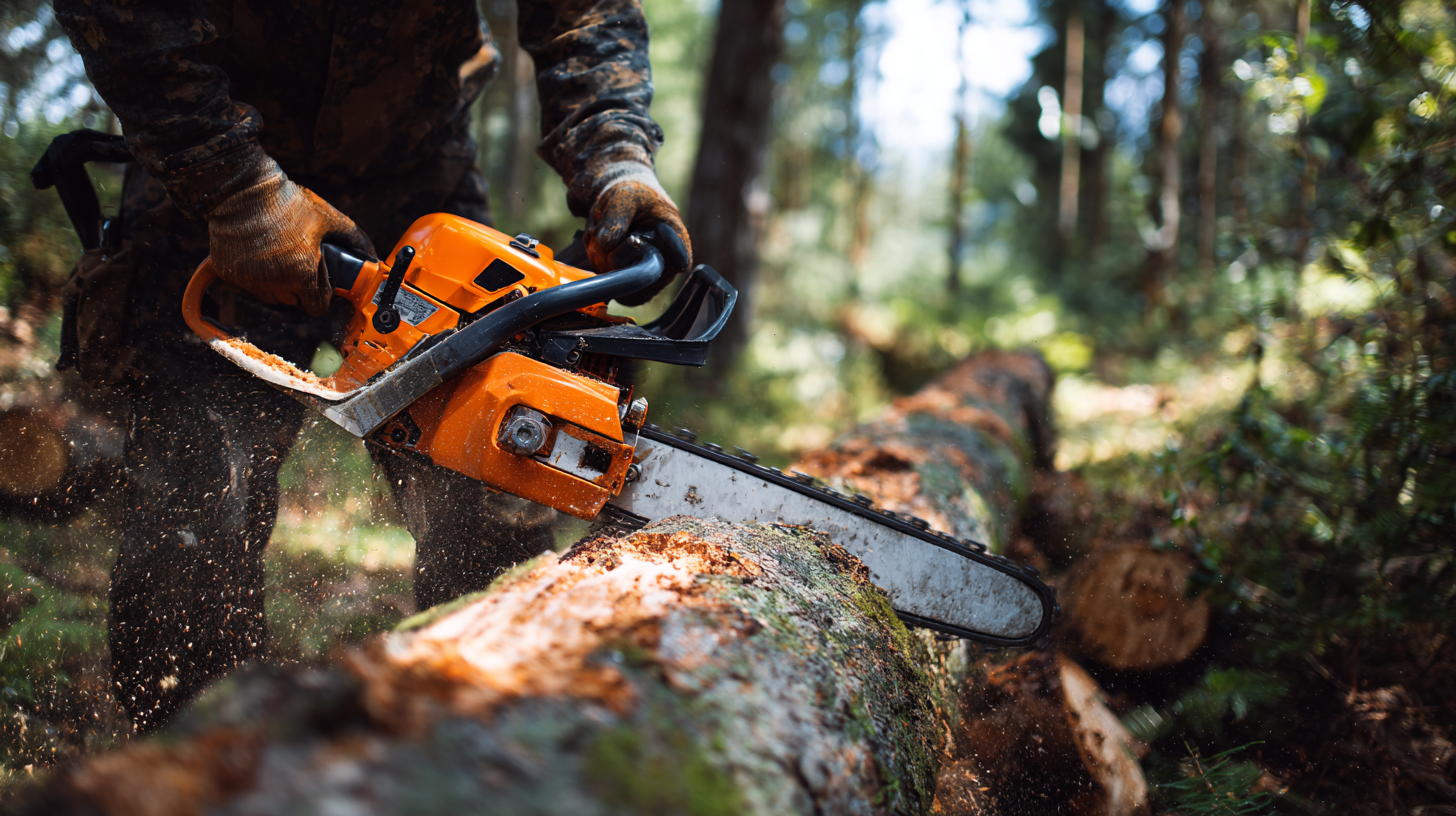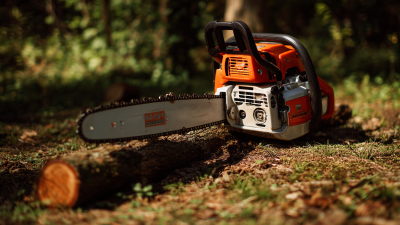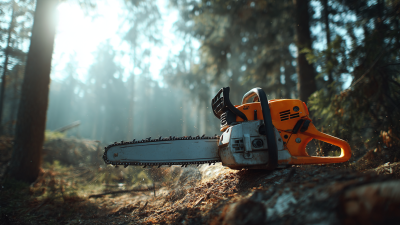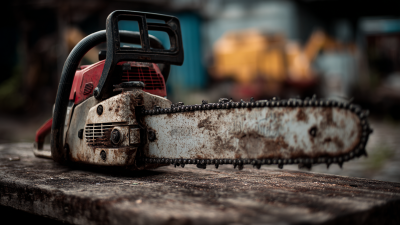Mastering the Art of Tree Trimming: Your Ultimate Guide to Using Petrol Chain Saws Effectively
In the realm of landscaping and tree management, mastering the art of tree trimming is essential for maintaining healthy and aesthetically pleasing outdoor spaces. One of the most powerful tools for this task is the Petrol Chain Saw. According to the Tree Care Industry Association (TCIA), improper tree maintenance can lead to costly repercussions, including property damage and increased safety hazards. Furthermore, a report by the National Tree Care Industry highlights that over 40% of tree issues arise from inadequate trimming practices. Effective use of a Petrol Chain Saw not only enhances the overall quality of tree care but also promotes the longevity and vitality of trees. As the demand for professional tree services continues to grow, understanding how to use this essential equipment safely and efficiently has never been more crucial for both homeowners and professionals alike.

Choosing the Right Petrol Chain Saw for Your Tree Trimming Needs
Choosing the right petrol chain saw for your tree trimming needs is essential for achieving efficient and safe results. According to industry reports, the global chainsaw market is expected to grow at a compound annual growth rate (CAGR) of 5.2% from 2021 to 2028, reflecting a rising demand for petrol chain saws in both professional and residential applications. Selecting the appropriate model involves consideration of several factors, including bar length, engine displacement, and weight. For example, a petrol chain saw with a bar length of 16 to 20 inches is ideal for trimming medium to large tree branches, while a model with a lighter weight is more maneuverable for prolonged use.
It is also important to understand power requirements. A petrol chain saw engine typically ranges from 30cc to over 90cc, with higher displacement engines providing more torque and power for larger jobs. A 50cc engine is often regarded as a versatile choice for homeowners and professionals, balancing power with manageability. Industry professionals suggest that when choosing a petrol chain saw, you analyze not just the size of the trees you intend to trim, but also your own skill level. A strong understanding of these specifications ensures that you invest in the right tool for your tree trimming tasks, enhancing both performance and safety.

Essential Safety Gear for Operating a Petrol Chain Saw
When it comes to operating a petrol chain saw, safety should always be the top priority. The essential safety gear includes a hard hat, which protects your head from falling branches, and earmuffs or earplugs to shield against the loud noise produced by the saw. Protective eyewear is crucial as well, as it safeguards your eyes from flying debris that could cause serious injuries. Additionally, wearing a face shield can provide extra protection against wood chips and hazardous particles.
Clothing also plays a vital role in ensuring safety during tree trimming tasks. Long-sleeved shirts and heavy-duty, cut-resistant pants are recommended to prevent cuts and scrapes. It is essential to wear high-quality, non-slip gloves for a secure grip on the chain saw while preventing blisters. Finally, sturdy, steel-toed boots with good ankle support will protect your feet and provide stability during operation. By equipping yourself with the right safety gear, you can significantly reduce the risks associated with using a petrol chain saw.
Step-by-Step Guide to Effective Tree Trimming Techniques
When it comes to effective tree trimming, using a petrol chainsaw can make the task quicker and more efficient. Start by ensuring that you have the right tools and safety gear in place. Wearing protective goggles, gloves, and ear protection is essential before you begin. Understanding the chainsaw's features and proper handling techniques will help you navigate the cutting process with confidence.
Next, develop a step-by-step approach to trimming your trees. Start by assessing the tree’s structure and identifying branches that need attention. Begin with the lower branches, making precise cuts at a slight angle to promote healthy regrowth. As you work your way up, ensure to maintain your grip and control over the chainsaw, allowing for smooth, even cuts. Remember to step back frequently to evaluate your progress and ensure that you’re achieving your desired outcome while maintaining the tree’s natural shape.
Maintenance Tips to Keep Your Petrol Chain Saw in Top Shape
Maintaining your petrol chain saw is essential for ensuring optimal performance and longevity. According to industry data from the Outdoor Power Equipment Institute (OPEI), poorly maintained chain saws can lead to a reduction in cutting efficiency by as much as 30%. Regular maintenance not only enhances performance but also significantly reduces the risk of accidents, which, as noted in a 2021 report by the National Institute for Occupational Safety and Health (NIOSH), are commonly attributed to equipment malfunction.
To keep your petrol chain saw in top shape, focus on routine tasks such as cleaning or replacing the air filter, checking and sharpening the chain, and ensuring that the fuel system is free of debris. The OPEI recommends inspecting the chain tension before each use to prevent kickbacks, which cause the majority of chain saw injuries. Additionally, always use high-quality fuel and oil, as studies show that improper fuel mixtures can diminish engine life by up to 50%. By adhering to these maintenance practices, you'll not only enhance the effectiveness of your tool but also ensure safety during your tree trimming activities.
Mastering the Art of Tree Trimming: Chain Saw Maintenance Insights
Common Mistakes to Avoid When Using a Petrol Chain Saw for Trimming
When it comes to tree trimming, using a petrol chainsaw can significantly enhance efficiency and effectiveness. However, many users make critical mistakes that can lead to safety hazards and diminished results. According to the International Society of Arboriculture (ISA), improper technique is one of the leading causes of accidents among inexperienced chainsaw operators, emphasizing the importance of mastering the tool before taking on larger projects.
One common mistake is neglecting personal protective equipment (PPE). The ISA reports that around 40% of chainsaw-related injuries could be prevented with appropriate safety gear, such as helmets, face shields, and cut-resistant clothing. Additionally, failing to maintain a steady grip and secure footing can result in loss of control, which may lead to accidents. Ensuring a proper stance and using both hands on the chainsaw can help mitigate risks and improve trimming accuracy.
Another frequent error lies in misunderstanding the chainsaw's capabilities and limitations. Operators often attempt to cut branches that exceed the saw's designated capacity, leading to stalling or damage to the tool. A report from the American National Standards Institute (ANSI) indicates that using chainsaws within their specified operational parameters not only enhances performance but also extends the lifespan of the equipment. Proper training and a clear understanding of your equipment are crucial for effective and safe tree trimming.

Related Posts
-

How to Master Your Ms880 Chainsaw for Ultimate Performance
-

Why the 58cc Chain Saw is Essential for Every Outdoor Enthusiast
-

Unleashing Power: The Ultimate Guide to the Ms880 Chainsaw for Professionals and Enthusiasts
-

Exploring the Ultimate Guide to Choosing the Best Chain Saw for Your Needs
-

Solutions for Maximizing Efficiency with Gasoline Chain Saws in the Forestry Industry
-

How to Choose the Best Hand Held Chain Saw for Your Cutting Needs




